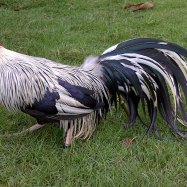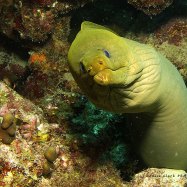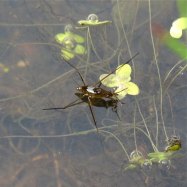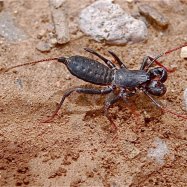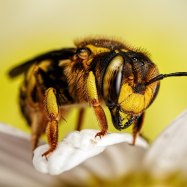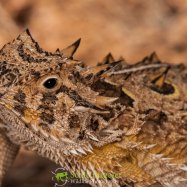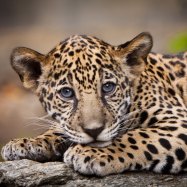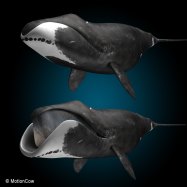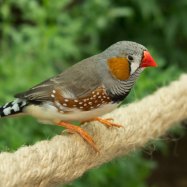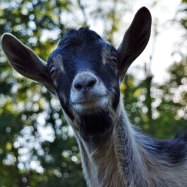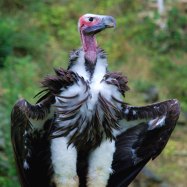
Eastern Green Mamba
1.8 to 2.4 meters
The Eastern Green Mamba, found in trees and shrubs, is a beautiful snake with a slender, elongated body. It can grow up to 2.4 meters in length and belongs to the Elapidae family. Beware of its venomous bite, but also admire its striking green color. #Animals #Snake #Elapidae
Animal Details Summary:
Common Name: Eastern Green Mamba
Kingdom: Animalia
Habitat: Tropical rainforests and savannas
The Elusive Eastern Green Mamba: A Magnificent Reptile of Eastern Africa
In the dense tropical rainforests and vast savannas of Eastern Africa, there is a strikingly beautiful and deadly creature lurking in the trees and bushes. This is the Eastern Green Mamba, scientifically known as Dendroaspis angusticeps. With its vibrant green color, slender and elongated body, and lightning-fast speed, it is one of the most elusive and fascinating reptiles in the world.An Introduction to the Eastern Green Mamba
The Eastern Green Mamba belongs to the Animalia kingdom, Chordata phylum, and Reptilia class Eastern Green Mamba. It is categorized under the Squamata order and Elapidae family. This species of mamba is mostly found in Eastern Africa, specifically in countries such as Kenya, Tanzania, and Uganda. Its preferred habitat includes tropical rainforests and savannas, where it can easily camouflage with its surroundings.The Hunting Habits of the Eastern Green Mamba
The Eastern Green Mamba is a carnivorous reptile, meaning it primarily feeds on other animals. Its diet mainly consists of small mammals, birds, frogs, and other reptiles such as lizards. This snake is a skilled hunter, using its potent venom and lightning-fast strikes to catch its prey. It is also known to be an ambush predator, waiting patiently for its prey to come near before striking with precision and accuracy.The Distribution of Eastern Green Mamba
As the name suggests, the Eastern Green Mamba can be found in the eastern parts of Africa, specifically in Kenya, Tanzania, and Uganda. However, it is important to note that this species is not evenly distributed throughout these countries Eastern Meadowlark. It is predominantly found in the coastal regions of Kenya and Tanzania, including the islands of Pemba and Zanzibar. In Uganda, it is mainly found in the forested areas of Mount Elgon and the Rwenzori Mountains.The Habitat of the Eastern Green Mamba
The Eastern Green Mamba prefers dense tropical rainforests and savannas as its habitat. These areas provide an ideal environment for the snake to thrive, with plenty of prey and ample hiding spots. They are also known to reside near rivers and streams as they provide a source of water and are home to many potential prey species. This snake is highly arboreal, meaning it spends most of its time in trees and shrubs. Its slender body and long tail allow it to move with ease and precision in these habitats.The Stunning Coloration of the Eastern Green Mamba
One of the most striking features of the Eastern Green Mamba is its bright green color. The upper side of its body is a vibrant green, while the underside is a pale yellow. This coloration helps the snake blend in with its surroundings, making it difficult for predators and prey to spot it. Its head is slightly darker in color, which helps it to camouflage even better in the shadows of the trees. The scales of this snake are also smooth and iridescent, giving it a shiny and almost metallic appearance when basking in the sunlight.The Slender and Elongated Body of the Eastern Green Mamba
The Eastern Green Mamba has a body that is slender and elongated, making it an agile and swift hunter. When fully grown, it can reach lengths of 1.8 to 2.4 meters, making it one of the longest venomous snakes in Africa. Its body is also very muscular, allowing it to move swiftly through the trees and catch its prey with ease. This unique body shape and structure make the Eastern Green Mamba a formidable predator.The Venom of the Eastern Green Mamba
Like all species of mambas, the Eastern Green Mamba has a powerful venom that it uses to immobilize its prey. Its venom is neurotoxic, which means it affects the victim's nervous system, causing paralysis and death. What makes this snake even more deadly is its ability to inject large amounts of venom in a single bite, making it highly dangerous to humans. However, despite its potentially lethal venom, bites from this snake are relatively rare due to its elusive nature and avoidance of human contact.The Threats to the Eastern Green Mamba
While the Eastern Green Mamba is not considered an endangered species, it does face some threats to its survival. Habitat destruction, especially in the form of deforestation, is a significant threat to this snake. As human populations continue to grow, more and more forests are being cleared for agricultural purposes, leaving less and less space for the snake to thrive. Additionally, they are often killed due to human fear and misunderstanding, despite their essential role in the ecosystem as predators and natural pest controllers.In Conclusion
The Eastern Green Mamba is a fascinating and elusive creature, with its stunning coloration, sleek body, and powerful venom. Its ability to blend in with its surroundings and strike with lightning-fast speed makes it a formidable hunter in the dense forests and savannas of Eastern Africa. While it may face threats to its survival, it is essential to understand and appreciate this magnificent reptile and its crucial role in maintaining the delicate balance of the ecosystem.

Eastern Green Mamba
Animal Details Eastern Green Mamba - Scientific Name: Dendroaspis angusticeps
- Category: Animals E
- Scientific Name: Dendroaspis angusticeps
- Common Name: Eastern Green Mamba
- Kingdom: Animalia
- Phylum: Chordata
- Class: Reptilia
- Order: Squamata
- Family: Elapidae
- Habitat: Tropical rainforests and savannas
- Feeding Method: Carnivorous
- Geographical Distribution: Eastern Africa
- Country of Origin: Kenya, Tanzania, Uganda
- Location: Trees and shrubs
- Animal Coloration: Bright green on the upper side, pale yellow below
- Body Shape: Slender and elongated
- Length: 1.8 to 2.4 meters
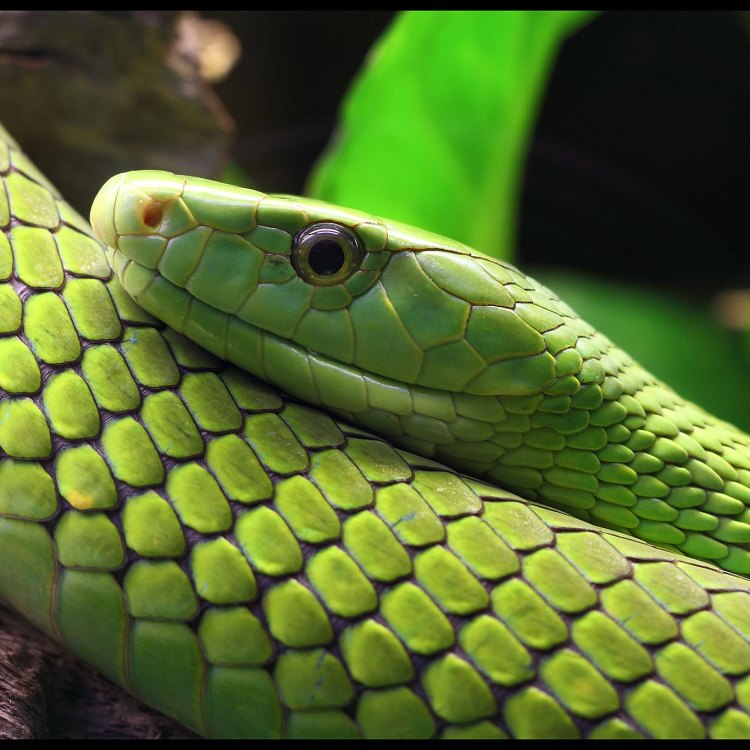
Eastern Green Mamba
- Adult Size: Large
- Average Lifespan: 10 to 15 years
- Reproduction: Oviparous
- Reproductive Behavior: Mating season varies depending on the region
- Sound or Call: Hissing sound
- Migration Pattern: Non-migratory
- Social Groups: Solitary
- Behavior: Diurnal, arboreal, and highly alert
- Threats: Habitat loss, poaching, and snakebite retaliation
- Conservation Status: Near Threatened (IUCN)
- Impact on Ecosystem: Keystone species in its habitat
- Human Use: Not commonly used or sought after by humans
- Distinctive Features: Long and slender body, brilliant green coloration
- Interesting Facts: -The Eastern Green Mamba is one of the fastest and most agile snakes in the world. -It primarily feeds on small mammals, birds, and reptiles. -Despite its venomous nature, it rarely poses a threat to humans due to its shy and elusive behavior. -It is an important predator in its ecosystem, helping to control populations of small vertebrates. -The Eastern Green Mamba is highly adapted for arboreal life, with the ability to glide between trees using its muscular body and laterally flattened tail.
- Predator: Birds of prey and larger snakes
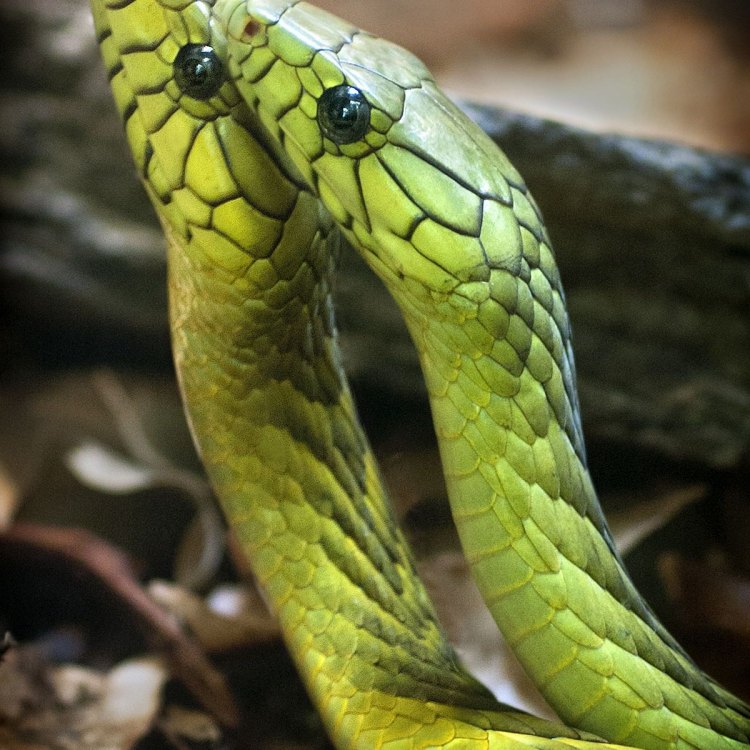
Dendroaspis angusticeps
The Amazing Eastern Green Mamba: A Master of the Trees
The Eastern Green Mamba (Dendroaspis angusticeps) is a species of venomous snake that is native to the sub-Saharan African region. Known for its vibrant green color and incredible speed and agility, this snake is highly revered by herpetologists and nature enthusiasts alike. Its unique features and behavior make it a fascinating and integral part of its habitat. In this article, we will explore the world of the Eastern Green Mamba, learning about its habitat, behavior, and its impact on the ecosystem PeaceOfAnimals.Com.Size and Lifespan
The Eastern Green Mamba is a large snake, with adults reaching sizes of up to 6 feet (1.8 meters) in length. They have a long and slender body, with a distinctive brilliant green coloration that gives them their name. This bright green color helps them camouflage among the lush green foliage of their arboreal habitat. Their average lifespan in the wild is estimated to be around 10 to 15 years, but some have been known to live up to 20 years in captivity.
Reproduction and Mating Behavior
The Eastern Green Mamba is an oviparous species, meaning that it lays eggs rather than giving live birth. The mating season for this species can vary depending on the region and environmental factors, but it typically occurs between October and November. During this time, males will compete for females by engaging in elaborate courtship displays, including raising their heads and bodies, and intertwining with each other. Once a male has successfully courted a female, they will engage in copulation, with the male wrapping his tail around the female's tail to fertilize her eggs English Shepherd.
Sound and Migration Patterns
Unlike other species of snakes, the Eastern Green Mamba does not use its sound to communicate with other snakes or potential predators. Instead, it is known for its signature hissing sound, which it uses as a warning to potential threats. This hissing sound can be heard up to 30 feet (9 meters) away, serving as a clear indication for other animals to stay away.
The Eastern Green Mamba is a non-migratory species, meaning that it does not move to different regions or habitats throughout the year. It is highly adapted to its arboreal lifestyle and will stay within its preferred area, often living in the same general location for its entire life.
Behavior and Social Groups
The Eastern Green Mamba is a highly alert and diurnal species, meaning that it is most active during the day. They are also solitary creatures, rarely interacting with other members of their species, except during the mating season. They are highly territorial and will defend their space from potential threats, including humans.
One of the most unique behaviors of the Eastern Green Mamba is its ability to glide between trees. This is made possible by its laterally flattened tail, which helps it to steer and control its movements in the air. This efficient use of their bodies allows them to cover large distances quickly, making them one of the fastest and most agile snakes in the world.
Threats and Conservation Status
Like many species of snakes, the Eastern Green Mamba faces several threats to its survival. One of the biggest threats is habitat loss, as their preferred habitat of rainforests and woodlands is being destroyed for human development and agriculture. They are also poached for their skin, which is used in traditional medicine, and their meat is considered a delicacy in some regions. Another major threat is snakebite retaliation, as humans often fear and harm these venomous snakes out of ignorance or fear.
Due to these threats, the Eastern Green Mamba is listed as Near Threatened on the International Union for Conservation of Nature (IUCN) Red List. This signifies that the species is at risk of becoming endangered if steps are not taken to protect it and its habitat.
Impact on the Ecosystem
The Eastern Green Mamba plays a vital role in its ecosystem, serving as a keystone species. This means that it has a disproportionate effect on its environment and is crucial to maintaining the balance and health of its habitat. As predators, they help to control the populations of small vertebrates, including rodents, birds, and other snakes. By regulating these populations, they prevent overgrazing of plants and maintain a diverse and healthy ecosystem.
Human Use and Interesting Facts
Despite its venomous nature, the Eastern Green Mamba is not commonly sought after or used by humans. It is not a major source of venom for anti-venom production, and its skin is not as highly prized as other species of snakes.
However, there are still some interesting facts about this remarkable snake that are worth mentioning. As mentioned earlier, it is one of the fastest and most agile snakes in the world, capable of moving at speeds of up to 12 miles per hour (19 kilometers per hour). It also has excellent eyesight, able to spot potential prey from high up in the trees. Its venom is highly potent, with a neurotoxic effect that can cause respiratory failure in its prey. However, despite this, it is rarely aggressive towards humans and will only strike if it feels threatened and cannot escape.
The Eastern Green Mamba is also an incredibly efficient predator, preying on a variety of small mammals, birds, and reptiles. It uses its powerful muscles and lightning-fast reflexes to strike and capture its prey, injecting them with its venom and waiting for them to succumb before consuming them whole.
Predators
Despite being a formidable predator, the Eastern Green Mamba does have some natural enemies in its ecosystem. Larger species of snakes, such as the African Rock Python and the African Harlequin Snake, are known to prey on mambas, as well as birds of prey such as eagles and hawks. However, their elusive nature and speed often make it difficult for predators to catch them.
In Conclusion, the Eastern Green Mamba is a fascinating and important species that plays a crucial role in its ecosystem. With its unique features and behaviors, it has captured the interest and admiration of many, making it a beloved species among herpetologists and nature enthusiasts. However, it is facing significant threats to its survival and requires conservation efforts to ensure its continued existence. As we continue to learn more about this magnificent snake, let us also strive to protect and preserve its habitat, allowing the Eastern Green Mamba to continue reigning as the master of the trees.
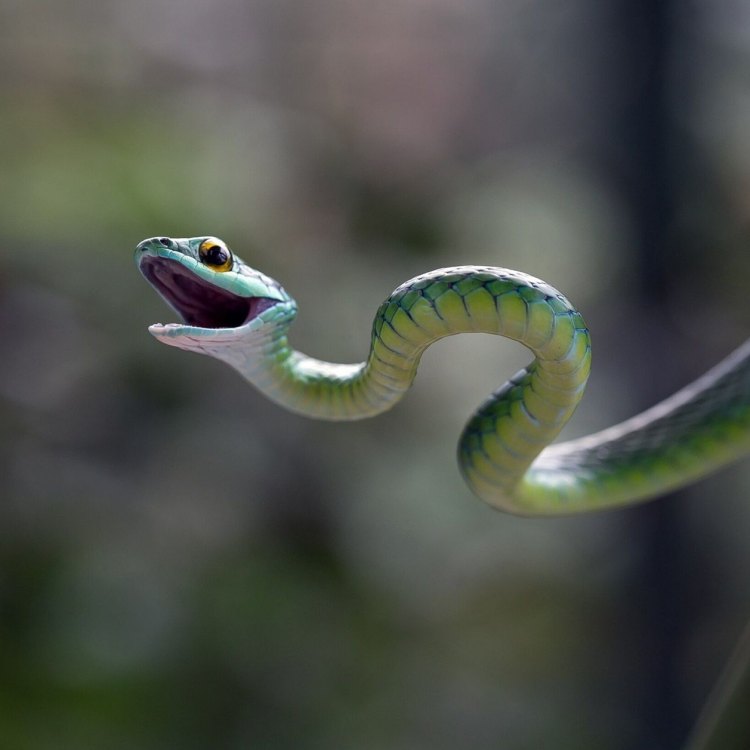
The Elusive Eastern Green Mamba: A Magnificent Reptile of Eastern Africa
Disclaimer: The content provided is for informational purposes only. We cannot guarantee the accuracy of the information on this page 100%. All information provided here may change without prior notice.

